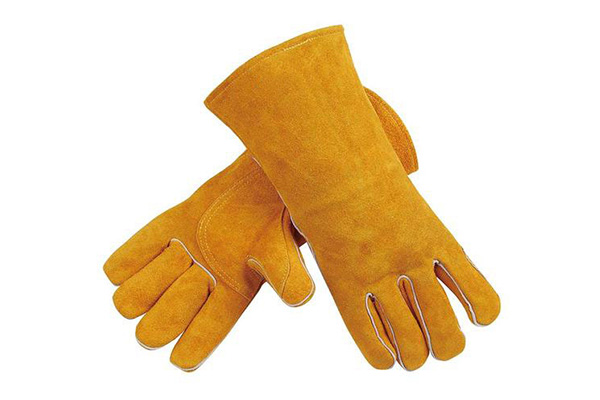What Are Welding Gloves Made of?
Welding is a skilled craft that involves extreme heat, sparks, and molten metal. Protecting your hands is critical, and that’s where welding gloves come in. But have you ever wondered what welding gloves are made of? In this article, we’ll explore the materials, construction, and types of welding gloves to help you choose the best pair for your needs.
Why Material Matters in Welding Gloves
Welding gloves are not just ordinary gloves. They need to provide:
- Heat resistance to withstand sparks and molten metal
- Durability to prevent wear and tear
- Comfort to allow precise hand movements
- Protection from cuts and abrasions
The materials used in welding gloves directly impact how well they perform these tasks.

Common Materials Used in Welding Gloves
1. Leather
Leather is the most common material used in welding gloves. Its natural properties make it ideal for protecting against heat and abrasion.
- Cowhide Leather: Durable and provides moderate heat resistance, often used for MIG welding.
- Goatskin Leather: Softer and more flexible, making it suitable for tasks requiring dexterity.
- Pigskin Leather: Highly durable and resistant to moisture, often used in high-wear gloves.
- Deerskin Leather: Extremely soft and comfortable, offering excellent dexterity but slightly lower heat resistance.
2. Kevlar
Some welding gloves incorporate Kevlar stitching for extra strength. Kevlar is a heat-resistant synthetic fiber that helps prevent seams from burning or tearing during welding.
3. Aluminized Materials
For high-heat applications like torch welding or foundry work, gloves may feature an aluminized layer. This reflective material helps deflect radiant heat away from your hands.
4. Cotton or Fabric Linings
Many gloves include a soft cotton or synthetic lining inside. This improves comfort, wicks away moisture, and reduces friction, making long welding sessions easier on your hands.
Types of Welding Gloves Based on Material
- MIG Welding Gloves: Usually made from cowhide for durability, offering moderate dexterity.
- TIG Welding Gloves: Typically made from soft goatskin or deerskin for precision work.
- Stick Welding Gloves: Often thicker cowhide gloves with added heat resistance for high-intensity welding.
- High-Heat Gloves: Incorporate aluminized materials or extra layers of leather for extreme temperatures.
How to Choose the Right Welding Gloves
When selecting welding gloves, consider:
- Type of Welding – TIG welding requires more dexterity, while stick welding needs thicker gloves.
- Heat Exposure – High-heat applications require gloves with extra insulation or aluminized layers.
- Comfort and Fit – Gloves should fit snugly but not restrict movement.
- Durability – Look for reinforced stitching and high-quality leather to ensure longevity.
Final Thoughts
Understanding what welding gloves are made of is key to choosing the right protection for your hands. Most welding gloves are crafted from various types of leather, often enhanced with Kevlar stitching, fabric linings, or aluminized layers depending on the application. By selecting gloves suited to your welding type and heat exposure, you can work safely, comfortably, and efficiently.
